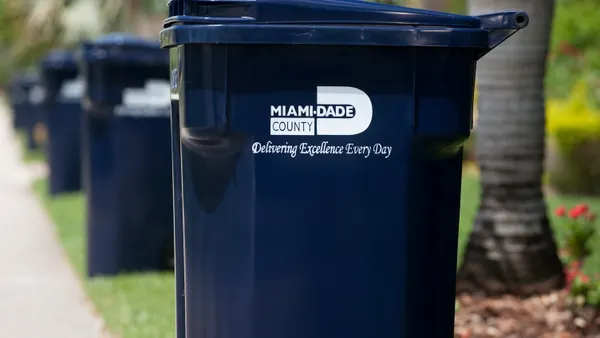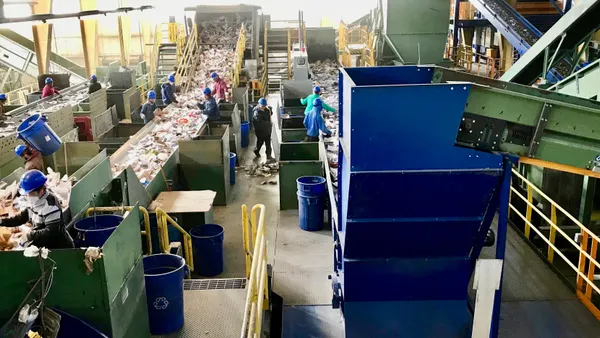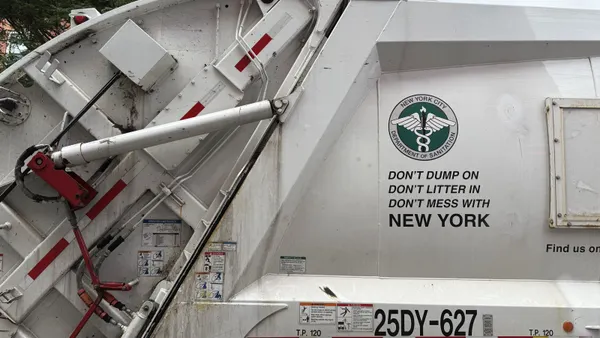Dive Brief:
- The board of commissioners in Hennepin County, MN has begun discussing the possibility of enacting a countywide organics diversion requirement for cities with populations of 10,000 or more by 2022, as reported by the Star Tribune.
- About 11% of county residents already have organics collection services, mostly in Minneapolis, and this would expand that to 91% of the county's population. Main cities that would be covered by the new policy include Bloomington, Brooklyn Park, Plymouth, Maple Grove, Eden Prairie and Minnetonka.
- The board is also looking at a separate commercial diversion requirement that would cover an estimated 3,000 businesses. Under that proposal, any businesses that generate more than one ton of waste per week would have to source separate organic material by 2020.
Dive Insight:
Driven by a state goal for the Twin Cities Metropolitan Area to divert 75% of waste by 2030, Hennepin County has become one of the most ambitious local governments outside of the West Coast and the Northeast when it comes to organics diversion policy. Last year, the county announced that it would begin using half of all state recycling funds for organics programs. Ongoing curbside programs in Minneapolis and a handful of smaller cities have already begun the process.
The details of a potential expansion would vary between additional cities, in part because certain municipalities are set up for residents to contract with haulers directly and they could choose whether or not to pay for the service. Based on recent results from the first full year of service in Minneapolis, this may still require a robust educational effort to get people onboard even if the county requirement is passed. So far the city has seen 43% participation from eligible residential accounts, but that has only yielded half of the expected tonnage.
Ensuring the success of any countywide policy will also require implementing a parallel goal of 5% waste reduction at the same time as the 75% diversion goal. According to the Minnesota Pollution Control Agency (MPCA), waste generation is on the rise at the same time as the county's respectable overall diversion rate has begun to see a slight decline. Though if all of these goals can somehow be achieved and Hennepin hits its 2030 mark then MPCA projects the county would only be sending 1% of its waste to landfills — the county also owns a waste-to-energy plant — by 2036.
However the county board decides to proceed, the progress in the Twin Cities Metro Area has already shown that organics diversion is possible in the Midwest and may encourage further discussion in neighboring states. Based on a recent survey, the average landfill tip fee in the Midwest is now slightly above the U.S. average so more cities could start becoming curious about their diversion options.









